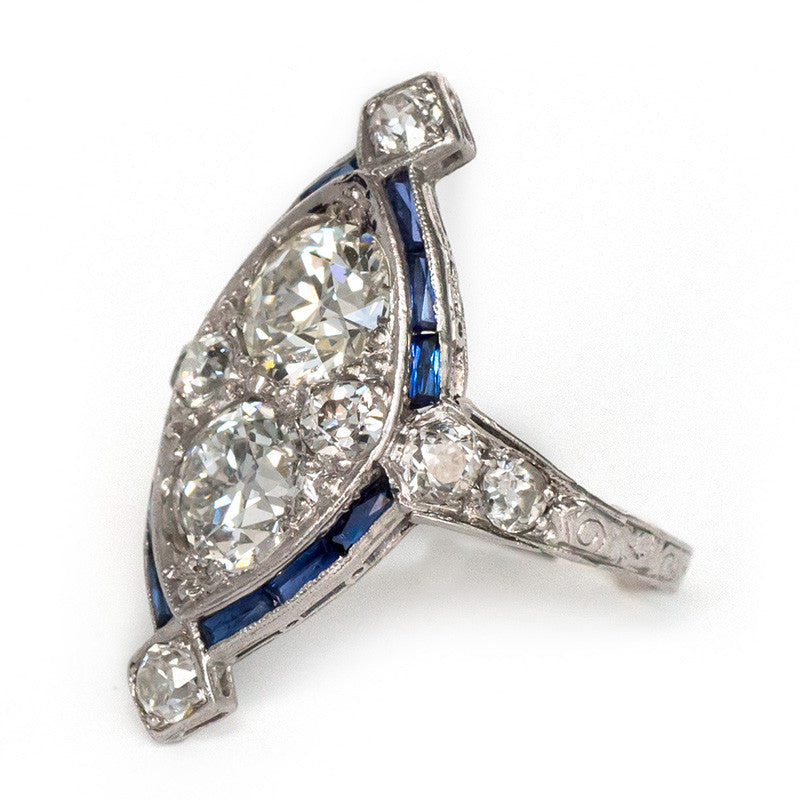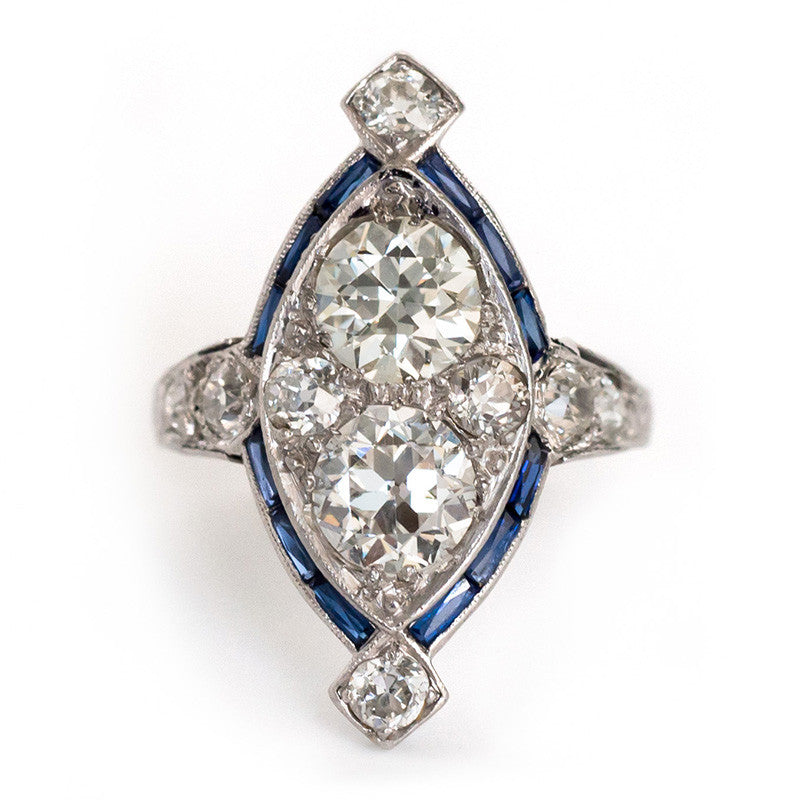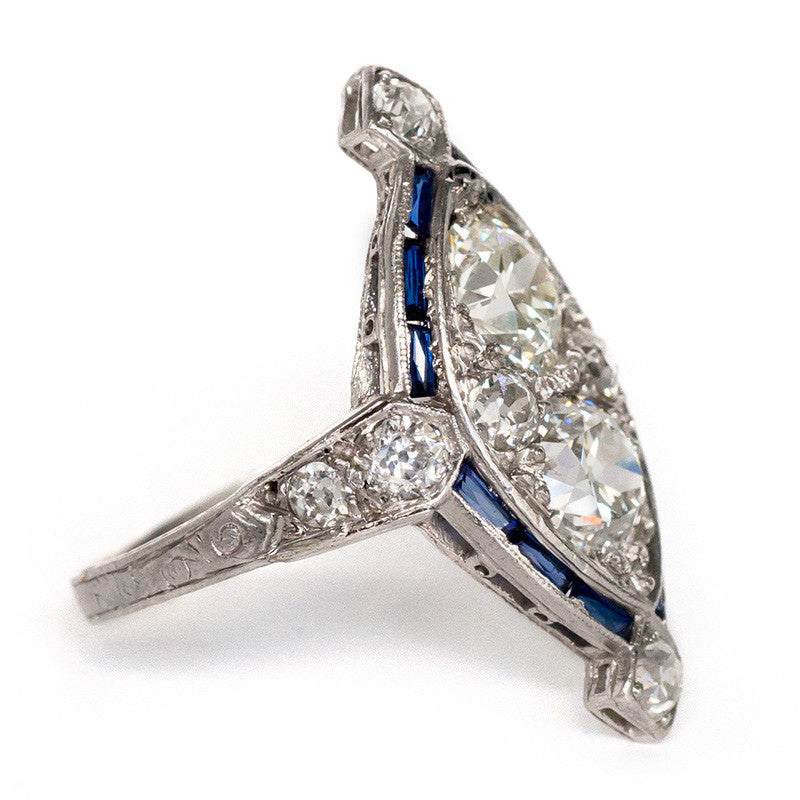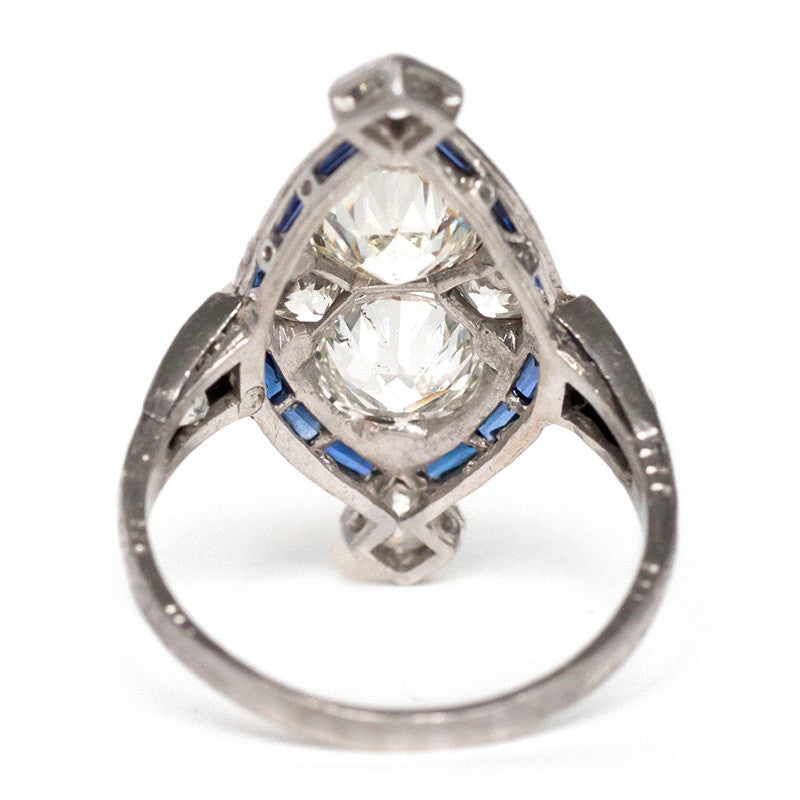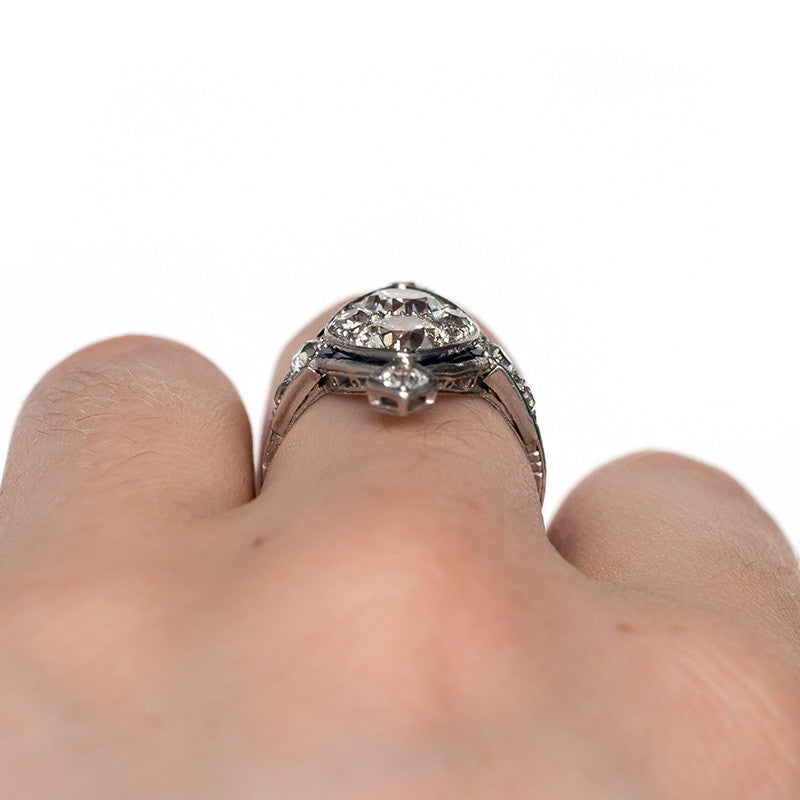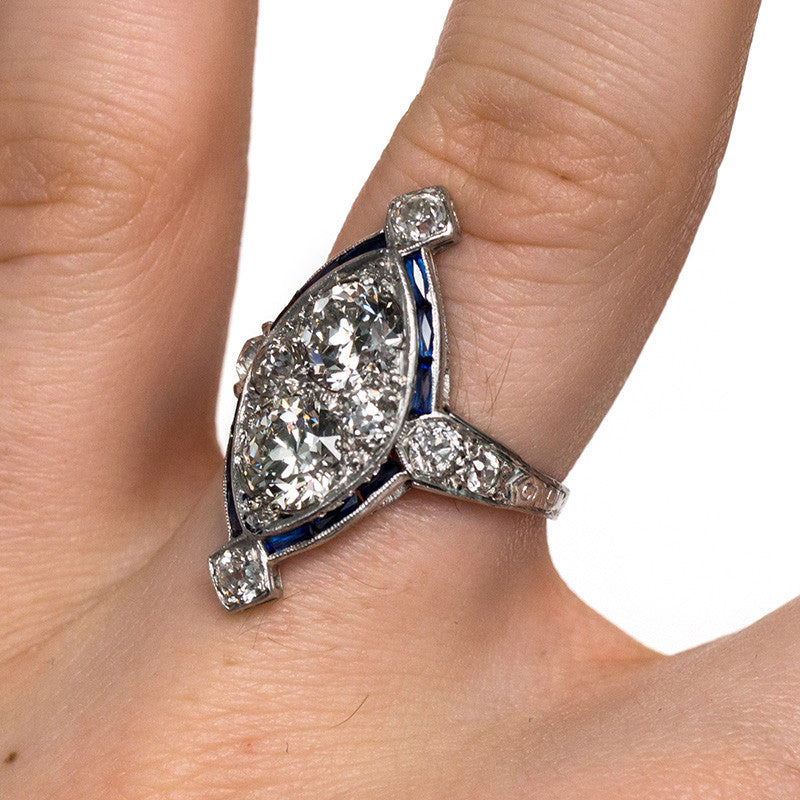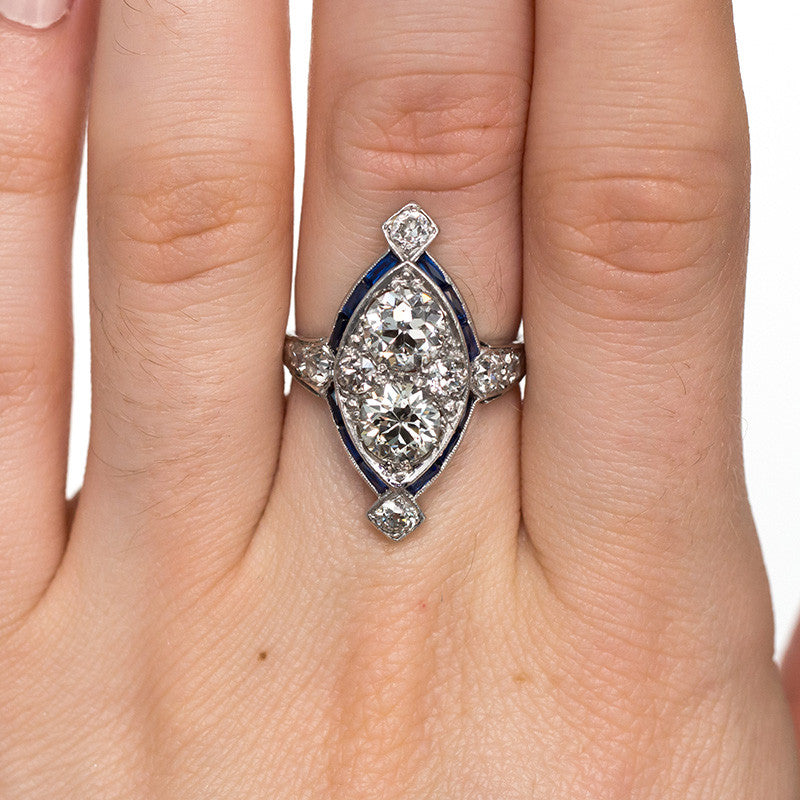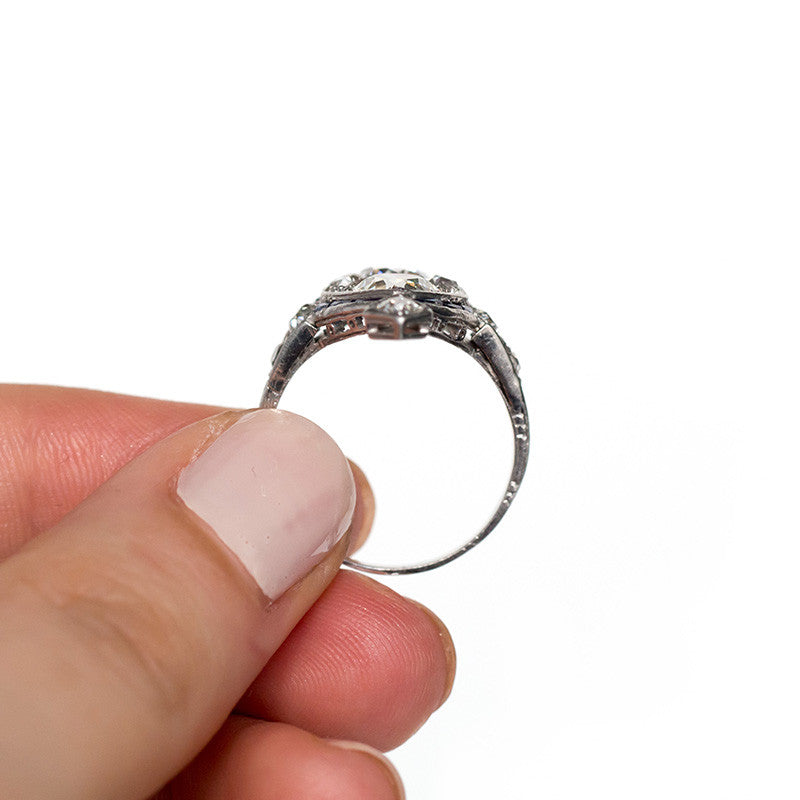The Verma Group
Milwaukee
Milwaukee
Couldn't load pickup availability
Circa 1920 - 2 Stone GIA Certified Old European Cut Diamond - with Sapphire Halo set in Platinum - 3.09cttw - ATL#184A
If this one doesn't leave you speechless, we don't know what will! This piece is absolutely amazing. The ring is handcrafted in platinum with light metal engraving work around the upper 1/2 of the band. There is a halo of french cut natural sapphires which are arranged in a marquise shape. There are 8 old european cut side stones which are approximately 1.00ct total weight, and extremely clean and white. The quality of these side stones are awesome, and the cutting pattern really gives a great fire and brilliance which each movements of the ring. Now we can speak on the two large center stones. The first diamond is a GIA certified old european cut diamond of 1.08ct, with a color of J and clarity of SI1. The second GIA certified diamond is an old european cut weighing 1.01ct with a color of G and clarity of SI2. These two diamonds are of uber high quality and both have amazing fire and brilliance. All in all, this ring is truly amazing, and a one of a kind antique engagement ring. The two diamonds signify the unions of two partners.
This engagement ring is accompanied with 2 GIA certificate's for the two center diamonds.
This engagement ring is accompanied with GAI paperwork and certificate of appraisal on the entire ring.
Item Details:
Ring Size: 6.5
Metal Type: Platinum
Weight: 4.0 grams grams
Center (1) Diamond Details
Shape: Old European Brilliant
Carat Weight: 1.01 ct
Color: G
Clarity: SI2
Center (2) Diamond Details
Shape: Old European Brilliant
Carat Weight: 1.08 ct
Color: J
Clarity: SI1
Side Stone Details:
Shape: Old European Cut
Total Carat Weight: 1.00 cttw
Color: H
Clarity: VS2
Finger to Top of Stone Measurement: 2.84mm
Art Deco Era:
Time Period: The Art Deco movement is sometimes dated to between 1920 to 1930, but its beginnings started around 1915 and continued into the 30s. While the styles of the time were in full swing between the 1920s and 1930s, and exploded in the mid-1920s thanks to the "Exposition des Arts Decoratifs et Industriels Modernes" held in 1925 in Paris, Art Deco rings may be found dated from 1915 and up to around the mid-1930s.
Description of Era: The artistic design styles of the day were heavily eclectic, even daring, and combined geometric patterns and lines with natural themes and shapes. This was an age of travel, exploration, economic booms and discovering new prospects. The world was experiencing a celebration of renewal and happiness post World War I and this awareness of new beginnings is captured in designs from the Art Deco era.
Art Nouveau influences from the early 1900s can be seen in many Art Deco styles too - a few in particular include geometric designs combined with ribbon, swirl and flower shapes. Motifs were also heavily influenced by increased travel, a growing interest in discovering other cultures, and the opening of King Tutankhamen's tomb in 1922. Many Art Deco designs contain Egyptian, African, Oriental and American Indian symbols, designs and patterns.
A bright and bold look was accomplished using eye-catching metal work combined with large diamonds and gemstones to create a style of geometric patterns and shapes. During the Art Deco years, yellow gold was not used often. Platinum, 18k and 14k white gold and sterling silver were most common. Colorful gemstones and gorgeous diamonds were used often in designs. Gemstones featured prominently in rings of the day, in addition to diamonds, included emeralds, sapphires, jade, black onyx and rubies. Crystal and mother-of-pearl were favored in ring designs throughout the Art Deco years as well and the channel setting was the most popular type of gemstone setting at this time. Art Deco diamond rings were generally made with stones cut with large top table facets and newer cuts such as baguettes, triangle cuts and emerald cuts. However, old world traditional diamond cuts are sometimes seen in Art Deco rings as well.
When you choose to go vintage with VERMA, you are cutting out the use for further mining and environmental damages which are a byproduct. In addition, the diamonds used in our collection are all conflict-free; as the conflict mines were in production after our pieces are dated.
Share
